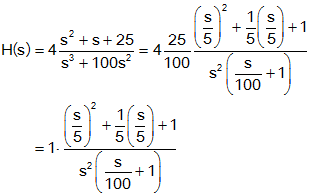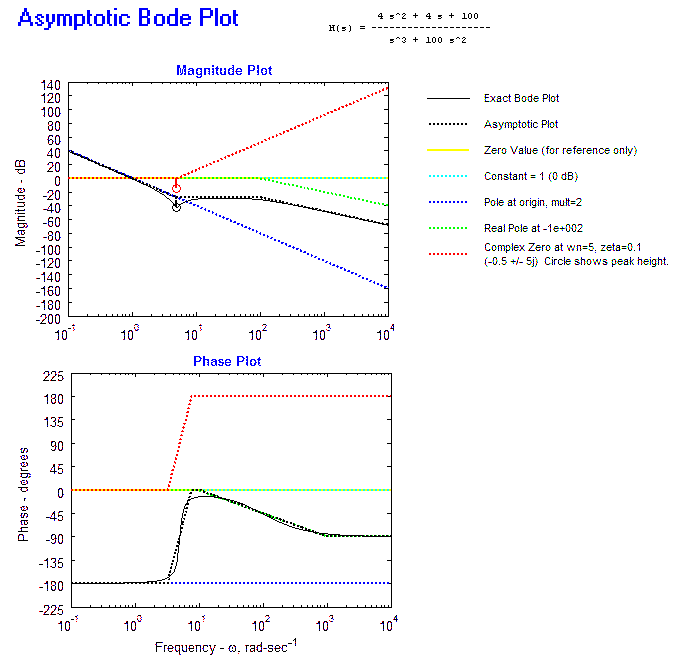Bode Plot: Example 6
Draw the Bode Diagram for the transfer
function:

Step 1: Rewrite the
transfer function in proper form.
Make both the lowest order term in the numerator and
denominator unity. The numerator is an order 2 polynomial, the
denominator is order 3.

Step 2: Separate the
transfer function into its constituent parts.
The transfer function has 4 components:
- A constant of 1
- A pole at s=-100
- A repeated pole at the origin (s=0)
- Complex conjugate zeros at the roots of s2+s+25,
with

Step 3: Draw the Bode
diagram for each part.
This is done in the diagram below.
- The constant is the cyan line (A
quantity of 1 is equal to 0 dB). The phase is constant at 0 degrees.
- The pole at 100 rad/sec is the green line. It is 0 dB up to the break frequency, then
falls with a
slope of -20 dB/dec. The phase is 0 degrees up to 1/10 the break
frequency then falls linearly to -90 degrees at 10 times the break
frequency.
- The repeated poles at the origin are
shown with the blue line. The slope is -40 dB/decade (because pole
is repeated), and goes through 0 dB at 1 rad/sec. The slope is -180
degrees (again because of double pole).
- The complex zero is shown by the red
line. The zeros give a dip in the magnitude plot of

at a frequency of 5 rad/sec (because
ζ is small, ωr≈ω0). This is shown by the red circle.
The phase goes from the low
frequency asymptote (0 degrees) at

to the high frequency asymptote at

Again, because ζ is so small, this line is close to vertical.
Step 4: Draw the overall Bode diagram by
adding up the results from step 3.
The exact response is the black line.








